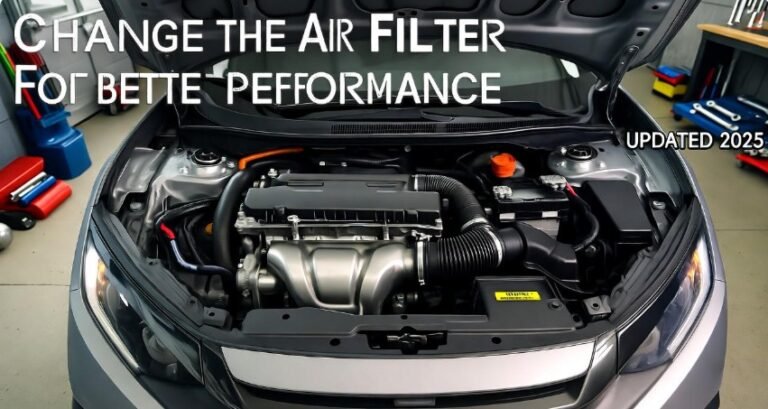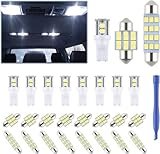How To Get Rid Of Condensation Inside A Car Windshield? – Easy, Effective, and Proven Solutions

You know that feeling — it’s a chilly morning, you’re running late, and the moment you sit in your car, you’re greeted not by a clear view of the road, but a fogged-up windshield. That thin layer of condensation inside your car windshield can make driving not only frustrating but also dangerous. The blur between inside warmth and outside cold creates that unwanted mist, leaving you frantically wiping the glass.
But here’s the thing — that fog is more than just a small inconvenience. If ignored, it can lead to mold growth, rust, and even long-term windshield damage. The good news? You can easily fix it and prevent it from coming back.
In this detailed guide, we’ll walk through everything — what causes the condensation, how to get rid of it instantly, and how to stop it from showing up again. Think of it as your all-weather friend for keeping your windshield crystal clear — no more foggy mornings, no more guesswork.
Understanding Why Condensation Happens Inside Your Car Windshield

Before jumping to solutions, it’s crucial to understand why condensation forms inside your car windshield in the first place. Picture this: warm, humid air trapped inside your car meets the cold surface of your windshield. That warm air quickly cools, releasing moisture that sticks to the glass.
Here are the main reasons why this happens:
-
Temperature difference: The most common culprit. When your car’s interior is warmer than the outside air, moisture turns into tiny droplets on the windshield.
-
Poor ventilation: If your air vents are blocked or the circulation system isn’t working well, humidity can build up inside your car.
-
Wet items inside the car: Umbrellas, wet clothes, or even damp floor mats add unnecessary moisture to your car’s air.
-
Leaking seals or cracks: Damaged seals around the windshield allow moisture to seep in and settle inside the cabin.
To put it simply, condensation is a result of trapped moisture and temperature imbalance. The more you understand these two, the easier it becomes to control and eliminate the fog.
Immediate Steps: How to Get Rid of Condensation Inside a Car Windshield Fast
Let’s get practical. You’re sitting inside your car, and the windshield is completely fogged. What do you do right now? Here’s a quick, foolproof method to clear it up fast.
1. Turn On the Defroster
Start by turning on your defroster to the highest temperature setting. This helps balance the temperature between the air inside the car and the windshield surface. The warm air evaporates the moisture, clearing up visibility within minutes.
2. Use the Air Conditioner
It may sound odd on a cold day, but the A/C helps remove humidity from the air. Even in winter, running your A/C (alongside the heater) helps dry out the interior air faster, eliminating condensation more efficiently.
3. Adjust Air Circulation
Make sure you turn off the air recirculation mode. You want fresh, dry air from outside coming in to replace the humid air trapped inside.
4. Use Wipers If Needed
Once the inside starts clearing up, give your windshield wipers a gentle swipe. This removes any remaining residue or thin moisture layer from the glass surface.
In a few minutes, you’ll notice the fog fading and your windshield turning crystal clear.
Home Remedies: DIY Tricks to Remove Windshield Condensation
If your car constantly fogs up, a few DIY tricks can make a world of difference. These are simple, cost-effective, and can be done using items you probably already have at home.
1. Vinegar and Water Spray
One of the most popular solutions is the vinegar-water mixture.
Here’s how you can make it:
-
Mix equal parts white vinegar and water in a spray bottle.
-
Spray lightly on the inside of your windshield.
-
Wipe clean with a microfiber cloth.
The acetic acid in vinegar helps cut through moisture and prevents fog from forming again for a few days.
2. Use a Dehumidifier Bag
You can buy a car dehumidifier bag or make one at home. Simply fill a small breathable cloth bag with silica gel, rice, or baking soda, and place it under your car seats or dashboard. These materials naturally absorb excess moisture from the air.
3. Shaving Cream Hack
This one sounds unusual but works surprisingly well. Spread a small amount of shaving cream on the inside of the windshield, then wipe it off with a soft towel. The thin layer left behind acts as a temporary fog barrier, similar to what divers use on goggles.
4. Cat Litter in a Sock
Another quirky yet effective trick — fill a sock with cat litter, tie it up, and leave it under your seat. Cat litter is designed to absorb moisture, so it’ll keep your car’s humidity level low, reducing condensation significantly.
Each of these methods offers a temporary but handy fix, especially for those dealing with recurring fog on cold mornings.
Why Proper Ventilation Matters More Than You Think
When it comes to getting rid of condensation inside a car windshield, proper air circulation is often the unsung hero. Even if you clear up the fog, it’ll come back if the inside air stays damp.
Your car’s ventilation system helps regulate both temperature and humidity. If you often keep vents closed or blocked with items like jackets or papers, you’re unknowingly trapping moist air inside. Over time, that moisture clings to your windshield and windows, especially during colder months.
To ensure proper ventilation:
-
Keep air vents unblocked at all times.
-
Regularly check if your cabin air filter is clean — a clogged filter traps moisture.
-
Use the defrost mode periodically, even when there’s no fog.
-
Avoid leaving your car idle with windows closed for long periods, especially after rain.
Think of ventilation as your car’s breathing system — when it breathes freely, moisture problems simply disappear.
How Leaks and Seals Can Cause Hidden Condensation Issues
Sometimes, even with all the right techniques, you still wake up to foggy glass. That’s often a sign of leaks or damaged windshield seals.
The rubber seals around your windshield and windows act as barriers against outside air and water. When these seals wear out, crack, or loosen over time, rainwater and moisture sneak inside. Once trapped, this moisture turns into condensation whenever temperature shifts occur.
You can easily check this by:
-
Inspecting the rubber seals for visible cracks or gaps.
-
Running your hand along the edges to feel for cold air drafts.
-
Checking carpets and mats for damp spots after rain.
If you notice any of these, it’s time to replace or reseal the area. A small leak may seem harmless at first, but over time it can lead to mold growth, electrical issues, and a persistent condensation problem that’s impossible to control otherwise.
The Role of Temperature and Humidity: Finding the Right Balance
Understanding temperature and humidity balance is key to keeping your windshield clear. Condensation forms when the air inside your car holds more moisture than it can handle for its temperature. The moment that humid air hits a cold surface — your windshield — it condenses.
To control this, you can:
-
Maintain a stable interior temperature instead of alternating between hot and cold air.
-
Keep your car dry by removing damp items immediately.
-
Use a small portable car dehumidifier if you live in a humid region.
A quick comparison table below shows how temperature affects condensation:
| Interior Temperature | Exterior Temperature | Condensation Risk |
|---|---|---|
| Warm (25°C) | Cold (5°C) | High |
| Moderate (20°C) | Mild (15°C) | Medium |
| Cool (18°C) | Cool (18°C) | Low |
The goal is simple — keep your car’s inside temperature close to the outside when parking overnight, and moisture will have fewer chances to condense.
Why Ignoring Condensation Can Be a Bigger Problem
Most people see foggy windows as a small annoyance, something that’ll clear up eventually. But ignoring it can cause hidden damage. When moisture lingers inside your car, it doesn’t just vanish — it settles into materials like fabric, leather, and metal. Over time, this can cause:
-
Mold and mildew growth, especially under floor mats and seats.
-
Rust formation on metallic components like the seat frames or door sills.
-
Electrical problems, since moisture can corrode circuits and connectors.
-
Permanent windshield stains if water minerals dry on the surface repeatedly.
So, getting rid of condensation isn’t just about visibility — it’s about protecting your car’s long-term health.
Smart Prevention: How to Stop Condensation Before It Starts
Now that you know how to get rid of condensation, let’s talk about something even better — how to prevent it from happening in the first place. Because honestly, the best fix is the one you don’t have to use again and again.
The secret lies in keeping your car dry, ventilated, and temperature-balanced. Here’s how you can make that happen easily:
-
Keep the air moving: Always make sure your air vents are open and unblocked. Airflow prevents moisture buildup.
-
Use your A/C year-round: Even in winter, your air conditioner helps remove humidity from the cabin air.
-
Avoid leaving wet items inside: Don’t keep damp clothes, gym bags, or umbrellas in your car overnight.
-
Crack the windows slightly: If it’s safe, leave your window open just a tiny bit when parked to let humid air escape.
-
Clean your windshield regularly: Dust and grime attract water vapor. A clean glass surface resists fogging much better.
If you apply these habits consistently, you’ll notice your car windshield staying clear every morning — no panic wiping or waiting for defrost to kick in.
Using Dehumidifiers and Moisture Absorbers: The Unsung Heroes
Sometimes, even with perfect habits, the environment itself works against you — especially if you live in a humid or rainy area. That’s when dehumidifiers and moisture-absorbing packets come in handy.
A car dehumidifier is a small, portable unit that quietly removes moisture from the air inside your vehicle. You can place it on the dashboard, under seats, or near the windshield. They don’t require much maintenance and can be recharged or replaced as needed.
If you’re on a budget, moisture-absorbing packets (often made with silica gel or calcium chloride) work wonders too. Just toss a few under the seats or near cup holders. They’ll absorb humidity before it turns into condensation.
Here’s a quick comparison to help you choose the right option:
| Product Type | Effectiveness | Longevity | Maintenance |
|---|---|---|---|
| Car Dehumidifier | High | Long-term | Rechargeable |
| Silica Gel Pack | Medium | Short-term | Replace often |
| DIY Rice Bag | Low | Temporary | Replace weekly |
Using one or two of these can keep your car’s humidity level stable, even during wet seasons.
Inspect and Maintain: Keeping Seals and Windshield in Top Shape
Your car’s windshield seals and glass integrity play a huge role in preventing moisture intrusion. Many drivers overlook this, assuming the fog is purely temperature-related, but often it’s a sign of small leaks.
To prevent future condensation issues, get into the habit of inspecting these areas:
-
Windshield edges: Look for cracks, chips, or loosened seals.
-
Door seals: Press around the rubber lining; if it feels brittle or cracked, it may be letting in air or water.
-
Sunroof drains: If your car has a sunroof, check the drain holes for clogs — these often leak into the cabin.
If you find anything suspicious, get it sealed or repaired right away. A few dollars spent on sealant now can save you from hundreds in potential water damage later.
A clear windshield starts with a dry interior, and a dry interior depends on keeping the elements out.
When to Seek Professional Help for Condensation Problems
Sometimes, DIY tricks and quick fixes just aren’t enough. If you’ve tried everything and still find fog or moisture building up, it’s time to call in the professionals.
Here’s when you should consider it:
-
Persistent fogging even after ventilation and drying efforts.
-
Wet carpets or seats that never fully dry out.
-
Musty smell inside the cabin, indicating trapped moisture or mold.
-
Visible damage or leaks around the windshield edges.
A professional technician can perform a leak test, check for damaged seals, inspect the HVAC system, and even clean out moisture buildup in hidden spots like air ducts.
In severe cases, where condensation has caused permanent etching or mineral stains on the glass, windshield replacement might be the best long-term solution. While it may sound costly, it restores full clarity and prevents recurring fog.
Long-Term Solutions to Prevent Recurring Condensation
If you want to ensure your car windshield never fogs up again, consider adopting a few long-term habits and upgrades.
1. Insulate the Car Interior
Adding window insulation film or using thermal windshield covers helps maintain a stable internal temperature. This minimizes the drastic temperature difference that triggers condensation.
2. Use a Windshield Sun Shade
A good-quality sun shade doesn’t just block UV rays — it also controls heat levels inside your car. It keeps your windshield cooler in the summer and reduces dew formation in winter.
3. Upgrade Windshield Wipers
You might not think about it, but old or cracked wiper blades can make condensation worse by leaving streaks that trap moisture. Invest in high-quality silicone wipers that sweep water cleanly without smearing.
4. Regular Cabin Filter Replacement
The cabin air filter plays a quiet but vital role in keeping the air inside your car dry and fresh. A clogged filter makes your defogger less effective. Replacing it every 12 months or 12,000 miles can significantly reduce fogging.
These aren’t overnight fixes — they’re small habits that add up to a big difference over time.
Common Myths About Windshield Condensation
Let’s bust a few common myths that often confuse car owners:
-
Myth 1: “Fog forms only in winter.”
Not true! It can happen anytime there’s a temperature gap between inside and outside — even on rainy summer mornings. -
Myth 2: “Turning up the heat clears fog faster.”
Only partially true. Heat helps, but air circulation and dehumidification are what actually clear fog efficiently. -
Myth 3: “You can ignore mild condensation.”
Even small moisture buildup can turn into mold and odor problems over time. It’s better to fix it early.
Understanding what’s real versus what’s not will help you handle the problem smartly without wasting time or effort.
Bonus Tips: Keep Your Windshield Crystal Clear
Here are some additional small but effective actions you can take daily:
-
Clean glass with an anti-fog product every couple of weeks.
-
Use microfiber cloths — paper towels can scratch or smear the surface.
-
Avoid smoking inside the car — nicotine residue attracts moisture and fogs faster.
-
Dry your floor mats after washing or rain exposure.
-
Run the defroster for a few minutes before shutting off your car on damp days.
These habits don’t take much effort but can completely change your daily driving comfort.
Frequently Asked Questions (FAQs)
1. Why does condensation form on my windshield even when my car is parked?
Condensation forms when the warm air trapped inside your parked car meets the cold glass surface. If your car is sealed tight without ventilation, the humidity inside turns into fog overnight.
2. Can air conditioning help get rid of condensation?
Yes! Your A/C system removes humidity from the cabin air, which helps dry out the windshield faster and prevents moisture buildup.
3. Is condensation inside the windshield dangerous?
It can be. Limited visibility makes driving unsafe, and long-term moisture exposure can cause mold growth, rust, or even electrical issues.
4. Should I wipe condensation off with a towel?
While you can, it’s only a temporary fix. Instead, use the defroster and A/C combo to eliminate fog from the source — the air moisture.
5. Can damaged seals really cause fog inside the windshield?
Absolutely. Damaged or cracked seals let water seep in, increasing humidity levels inside your car. It’s one of the top hidden causes of persistent fogging.
6. How can I prevent condensation in the winter?
Use your defroster, avoid wet items in the car, and keep a dehumidifier bag inside. Also, ensure your cabin air filter is clean for optimal airflow.
7. Does parking in a garage help?
Yes. A garage or covered area shields your car from sudden temperature changes, which significantly reduces the risk of condensation.
Conclusion: Clear Vision, Safe Drive
Dealing with condensation inside a car windshield might seem like a small inconvenience, but it’s a problem that deserves attention. A fogged windshield doesn’t just obscure your view — it signals trapped moisture that can harm your car over time.
By understanding the causes, applying quick removal methods, and following long-term prevention strategies, you can keep your windshield crystal clear every day. Remember, maintaining a dry, well-ventilated car is the key to stopping fog from forming in the first place.
So next time you hop into your car on a chilly morning, you’ll have confidence knowing your view of the road ahead will stay clean, bright, and fog-free — just as it should be.






